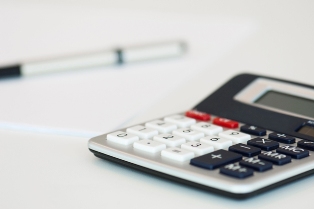insight
工程技术,地产投资,信仰家园,时尚生活It’s important that you understand the math used to determine if you’ll qualify for a commercial secured loan.

Why? Because…
1.) You’ll know, before you ever even approach a lender, if you can get the loan or not.
2.) If, after doing the math you determine that you don’t qualify, then you’ll know exactly what you need to do to change that.
So without further delay, let’s get to…
Your Questions
How do lenders determine if I’ll qualify for a commercial secured loan?
How can I calculate my own debt service coverage ratio (DSCR)?
Are there any lenders I can approach for a commercial secure loan without a DSRC of 1.25?
Real Answers
How do lenders determine if I’ll qualify for a commercial secured loan?
Lenders underwrite more than just you as an individual or corporation.
In fact, one of the primary factors that will determine your ability to qualify for a commercial loan is the commercial property itself.
Pictures of a beautiful store-front property are certainly NOT enough.
The most important part of the property is the income that it produces. It’s that INCOME that will allow you to pay the loan back.
Lender’s determine if there is enough income being generated by using what is commonly called the debt service coverage ratio or DSCR.
This DSCR tells lenders how well the property would cash flow if you were given the proposed loan.
A DSCR of 1.0 means that the property will only break even leaving no profits for you, the owner.
A DSCR of 0.99 or less means you’ll be operating at a loss. You’ll actually have to find other ways to pay the loan because the property can’t stand on its own.
A DSCR of greater than 1.0 means you’ll be operating with a positive cash flow at the end of the month.
Commercial lenders require that your commercial property have a DSCR of 1.25 or higher in order for you to qualify for a commercial secured loan.
So how do I calculate my own debt device coverage ratio (DSCR)?
To do the calculation on your property, you’ll need…
- the income and expense statement (also known as the profit and loss statement) for the subject property and
- a calculator
The equation is…
The Net Operating Income (NOI) divided by the Debt Service (DS) (NOI/DS).
Let me explain what the NOI and DS are.
Debt Service (DS) is just a fancy way of referring to the monthly payment, consisting only of the principal and interest (P&I) - not the taxes or insurance.
The Net Operating income (NOI) refers to the amount of money left over after all of the property’s expenses have been paid.
For example, lets’ take a look at a sample income and expense statement of a 10 unit apartment building. We’ll say it’s making $100,000 a year to make the math simple.
Gross Scheduled Rents…………………………………………………$100,000(Minus 5% Vacancy and collection loss)………….......……-$5,000
Effective Gross Income …………………………………………………$95,000
(Minus Operating Expenses)
Real Estate Taxes
Insurance
Repairs and Maintenance
Utilities
Management
Misc
Total Operating Expenses………………………………………………- $40,000
Net Operating Income (NOI)……………………………………..….= $55,000
So you see, the NOI (what’s left after all expenses are paid) in this example is $55,000 per year.
What does the NOI on your commercial property look like?
Next, we’ll divide that NOI ($55,000) by the principal and interest payment (also known as Debt Service) on the proposed loan.
Let’s assume the pricing offered on your commercial secured loan, based on your personal credit score is a mortgage for $500,000 over 15 years at 7% interest.
The monthly payment would be $4,494.14. Multiply that times 12 months and it’ll cost $53,929.68 per year.
(To calculate your monthly payment (DS) see our commercial loan calculator.)
NOI of $55,000 / Debt Service of $53,929.68 = DSCR of 1.02.
Yikes! Not quite enough to qualify.
Let’s try lowering the loan amount by about $100,000 (ouch).
Now it’s $400,000 at 7% interest over 15 years. The principle and interest payment is $3,595.31 multiplied by 12 months = $43,143.72.
NOI of $55,000 / Debt Service of $43,143.72 = DSCR of 1.27
Whew….
We just made it above the 1.25 requirement. Now we can qualify for a commercial loan!
Notice how we had to decrease the loan amount to make it work.
Wouldn’t it be nice if there were lenders out there who were willing to adjust other things to help you secure commercial real estate financing?
You know, like a 30 year term instead of 15 years, or giving a little slack on the 1.25 requirement, or even decreasing the interest rate!
Are there any lenders I can approach for a commercial secured loan without a DSRC of 1.25?
Yes!The good news is that there are a few good lenders out there who are willing to be more flexible and make the deal work.




